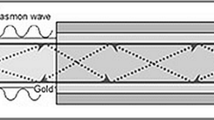Abstract
Reliable observation, detection and characterisation of polluted soil are of major concern in regions with military activities in order to prepare efficient decontamination. Flexible on-site analysis may be facilitated by biosensor devices. With use of fibre-optic evanescent field techniques, it has been shown that immunoaffinity reactions can be used to determine explosives sensitively. Besides antibodies as molecular recognition elements, high-affinity nucleic acids (aptamers) can be employed. Aptamers are synthetically generated and highly efficient binding molecules that can be derived for any ligand, including small organic molecules like drugs, explosives or derivatives thereof. In this paper we describe the development of specific aptamers detecting the explosives molecule TNT. The aptamers are used as a sensitive capture molecule in a fibre-optic biosensor. In addition, through the biosensor measurements the aptamers could be characterised. The advantages of the aptamer biosensor include its robustness, its ability to discriminate between different explosives molecules while being insensitive to other chemical entities in natural soil and its potential to be incorporated into a portable device. Results can be obtained within minutes. The measurement is equally useful for soil that has been contaminated for a long time and for urgent hazardous spills.






Similar content being viewed by others
References
Styles JA, Cross MF (1993) Cancer Lett 20(1):103–108
Levine BS, Furedi EM, Gordon DE, Barkley JJ, Lish PM (1990) Fundam Appl Toxicol 15(2):373–380
Banerjee HN, Verma M, Hou LH, Ashraf M, Dutta SK (1999) Yale J Biol Med 72(1):1
Hawari J, Halasz A, Beaudet S, Paquet L, Amoleman G, Thiboutot S (1999) Appl Environ Microbiol 65(7):2977–2986
Best EP, Zappi ME, Fredrickson HL, Sprecher SL, Larson SL, Ochman M (1997) Ann N Y Acad Sci 21(829):179–194
Best EP, Sprecher SL, Larson SL, Fredrickson HL, Bader DF (1999) Chemosphere 38(14):3383–3396
Naal Z, Park JH, Bernhard S, Shapleigh JP, Batt CA, Abruna HD (2002) Anal Chem 74(1):140–148
Narang U, Anderson GP, Ligler FS, Burans J (1997) Biosens Bioelectron 12(9-10):937–945
Pinnaduwage LA, Gehl A, Hedden DL, Muralidharan G, Thundat T, Lareau RT, Sulchek T, Manning L, Rogers B, Jones M, Adams JD (2003) Nature 425:474
Pinnaduwage LA, Wig A, Hedden DL, Gehl A, Yi D, Thundat T, Lareau RT (2004) J Appl Phys 95:5871
Sapsford KE, Charles PT, Patterson CH Jr, Ligler FS (2002) Anal Chem 74(5):1061–1068
Goldman ER, Hayhurst A, Lingerfelt BM, Iverson BL, Georgiou G, Anderson GP (2003) J Environ Monit 5(3):380–383
Shriver-Lake LC, Donner BL, Ligler FS (1997) Environ Sci Technol 31:837–841
Shriver-Lake LC, Patterson CH, van Bergen SK (2000) Field Anal Chem Technol 4:239–245
Singh S (2007) J Hazard Mater 144:15–28
Rimmele M (2003) Chembiochem 4:963–971
Menger M, Glökler J, Rimmele M (2006) RNA Towards Med 173:359–373
Song S, Wang L, Li J, Zhao J, Fan C (2008) Trends Anal Chem 27(2):108–117
Tuerk C, Gold L (1990) Science 249:505–510
Ellington AD, Szostak J (1990) Nature 346:812–822
Kleinjung F, Bier FF, Warsinke A, Scheller FW (1997) Anal Chim Acta 350:51–58
Kleinjung F, Klussmann S, Erdmann VA, Scheller FW, Fürste JP, Bier FF (1998) Anal Chem 70:328–331
Zeck A, Waller MG, Niessner R (1999) Fresenius J Anal Chem 364:51–63
Klussmann S, Nolte A, Bald R, Erdmann VA, Fürste JP (1996) Nat Biotechnol 14:1112–1115
Acknowledgements
We thank the German Bundesministerium für Bildung und Forschung (BMBF) and the Senate of Berlin for kindly supporting the project, Protekum GmbH for providing TNT in the beginning, as well as the Wehrwissenschaftliches Institut für Werks-, Explosiv- und Betriebsstoffe (WIWEB) for providing different analytical and soil samples.
Author information
Authors and Affiliations
Corresponding author
Rights and permissions
About this article
Cite this article
Ehrentreich-Förster, E., Orgel, D., Krause-Griep, A. et al. Biosensor-based on-site explosives detection using aptamers as recognition elements. Anal Bioanal Chem 391, 1793–1800 (2008). https://doi.org/10.1007/s00216-008-2150-5
Received:
Revised:
Accepted:
Published:
Issue Date:
DOI: https://doi.org/10.1007/s00216-008-2150-5




